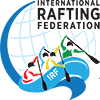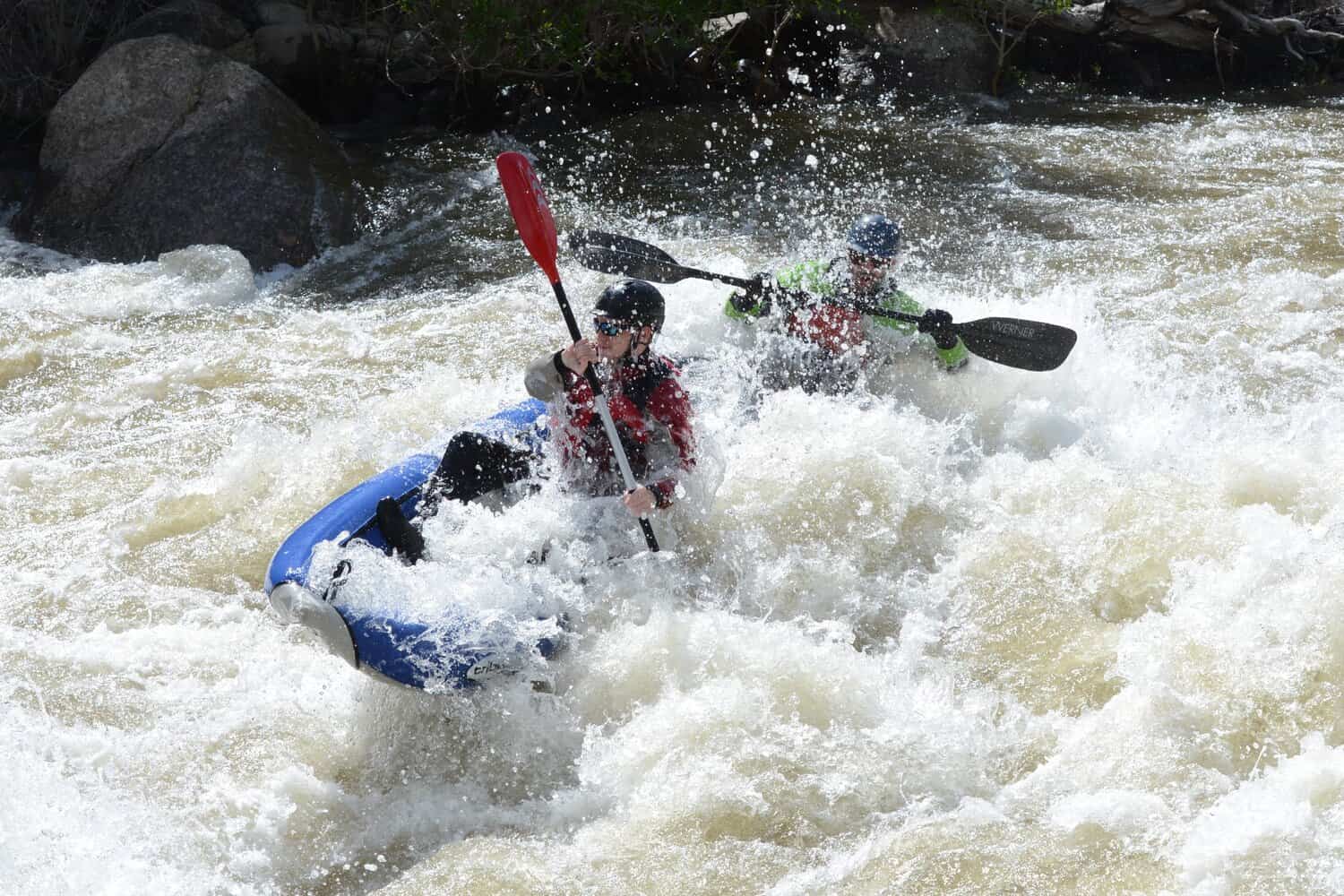Rising from the third largest glacier in Iceland (Hofsjökull 64°49′N 18°49′W ) The Austari jökulsa (East Glacial river) is without a doubt one of the silent giants of the European rafting world. If you ask any raft guides or rafting fans to name there 3 top European rafting rivers I am sure you would hear river names such as the Inn, Coruh, Ubaye . It is very rare you hear the name of the Austari Jökulsa mentioned.
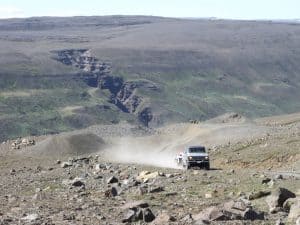
Rafting began on the East Glacial river in the mid 90s. As you can imagine setting up a rafting operation on a river in the North of Iceland was a mission in its self. Buying equipment, advertising and most of all training or hiring guides with suitable class 4-5 experience and knowledge was going to be an uphill struggle.
Two local companies managed this and are still around today to bare the fruits of there early labour. Iceland can now boast its own unique guide culture.
Both of the companies based in the North have a diverse mix of European, North & South American along with Nepalese raft guides. There has been a strong partnership over the years between Nepal and Iceland. Each year around 8 guides come here from May until late September. Iceland also has a small community of guides that have now settled here and started families.
Each year the teams from both companies pit their wits, skill and knowledge against the East River. In July 2012 a team of guides tackled the multi-day upper section of the East Glacial river.
The small village of Varamhlid is the base for rafting in the North of Iceland. The off road, 4×4 drive from Varmahlid takes about 3 hrs and takes you high into the interior desert of the Springisandur region. A true no mans land. The drive to the river in itself is an expedition in its own rights. Tough 4×4 vehicles are needed to cope with the rugged moonscape. The occasional water crossings are sure to get the pulse racing. It is a common thought amongst the rafting world that if the journey to the river is tough, the river journey its self will be tougher. This speaks volumes of the East Glacial river.

As we were all lazy raft guides we did not leave the base until 1pm as we knew that we could take full advantage of the midnight sun. The put in point for the East Glacial is a mere 20km from the Hofsjökull Glacier and on a clear day the Glacier is visible in all of its splendour. Today was a lovely clear sunny day. The raft was unpacked, we made a improvised harness from webbing to lash our bags to and we were ready for the setoff.
We put on the river at around 4pm.
The first 12 km of the river are flat and an easy warm up as you make your way through the desert. You slowly start to notice the river narrowing and some pretty spectacular rock formations in the distance. These formations mark the start of the first canyon. A quick picture and nature stop on a small beach on the river left us prepared for the action to come
The next 20-25km of the East Glacial is a constant barrage of long technical read and run class 3-4 rapids. We cautiously ran the first few rapids until we started to relax and tune into the river.
Once we were all in tune each member of the team had the biggest ear-to-ear smile on their faces. The rapids flowed into each other just giving enough time to make a quick scout from our boats and a snap second decision about which line to take. Due to the fact that this section only sees around 2 or 3 trips preseason none of the rapids have names yet.
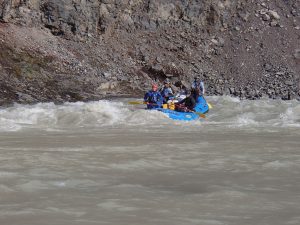 Us kayakers were having the time of our lives. Aapo mentioned that he was just waiting for the river to erupt into a solid class 5. I smiled and assured him from my previous trips that it would not. A swim or a flip on this section of river would not be highly recommended so we took conservative lines on all of the rapids ensuring our team safety at all times.
Us kayakers were having the time of our lives. Aapo mentioned that he was just waiting for the river to erupt into a solid class 5. I smiled and assured him from my previous trips that it would not. A swim or a flip on this section of river would not be highly recommended so we took conservative lines on all of the rapids ensuring our team safety at all times.
The milky grey glacial water made reading the river at times tricky. The raft could rely on the kayakers to roughly scout the lines for them . Paddle commands came in real useful during this section. Uncontrolled cartwheels & loops in creek boats was a signal for a big hole.
You might think that rafting in Iceland is cold and you would be right it is but on a run such as this the cold was the last thing on our mind. After 2.5 hours of solid concentration and paddling the river gently eased a little.
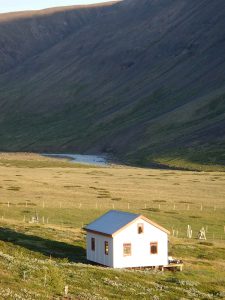 There had been no wind and amazing sunshine all day. It wasn’t until around 7pm I felt a touch of the cold North wind on my face this was a signal to get our heads down and start to paddle. As we were still on the water so late in the day we also had to deal with the low sun too.
There had been no wind and amazing sunshine all day. It wasn’t until around 7pm I felt a touch of the cold North wind on my face this was a signal to get our heads down and start to paddle. As we were still on the water so late in the day we also had to deal with the low sun too.
In the far north of Europe in the summer the sun sets and rises in the North. This daily ritual of sunset and sunrise takes about 5 minutes.
So to sum the situation up it was around 7pm we were 7 guys, 4 in the raft and 3 kayakers heading in a Northerly direction against a Northerly wind with the sun right in front of our faces. We had just paddled an amazing section of water. The mood was high we had around 1hrs paddling to our camp.
All of a sudden I heard a loud psssst noise from the raft my heart sunk. The boys had started on the beers. Being the official unofficial trip leader I made a deal with the boys to just have one beer until we got to the camp and to be fair they kept to there word. By doing this I killed 2 birds with 1 stone the boys stayed alert and sober and then there was a beer for me when we got to the camp.
Camp was a loose term though. I was starting to get the” where is the camp” questions from the team. I knew we were not far away. Imagine been in the middle of nowhere when all of a sudden a cosy heated cabin pops up next to the river in an amazing valley. We hurriedly unpacked the raft and made out way to Hildersel our palace for the evening. The Hildersel cabin is a bunkhouse complete with fully equipped kitchen, gas heater, bunk beds with blankets and a view to die for. A true Oasis in the barren landscape that surrounded us.
I wanted the members of the team with no multiday experience to kick back and relax. Myself and the Nepali boys Madhu,Kalu & Sayas got stuck into the catering. We had a team of 3 crack commando Nepali chefs preparing some top-notch food. Kalu and myself started off the proceedings by serving popcorn and Kalu’s very own recipe for rum punch, whilst Madhu and Sayas made a chicken curry to die for.
 Once we were all full with the dishes washed we sat round with a few beers, big smiles, wind and sun burnt faces all around and did what raft guides do best we talked absolute garbage. We were all soon in the land of zzzz.
Once we were all full with the dishes washed we sat round with a few beers, big smiles, wind and sun burnt faces all around and did what raft guides do best we talked absolute garbage. We were all soon in the land of zzzz.
I was the first to wake in the morning with my head still intact. Hailing from Northern England my job was simple! Breakfast. Pints of tea easily washed down with egg bacon and mushroom sandwiches. Funnily enough team Nepal understood the concept of the English breakfast but the Nordic members of the team, Finnur & Einar from Iceland and Aapo from Finland, could not quite grasp the idea of it all.
We cleaned Hildersel, packed the raft and slowly made our way down stream to the start of the Lower canyon of the East Glacial river.
The lower canyon of the East Glacial river has the nickname “The mini Zanskar”. Each day each guide no matter how many times he has run the lower canyon (over 200 for some of us) gets that little feeling in the pit of your stomach that says “I wonder what will happen today, am I going to get it today”. The lower East is not a river where you can allow the voices in your head to take over.
The previous day was all about technical rafting. Today’s style is going to be big punchy rapids. We slowly descended down into the lower canyon. The Merkigil bridge our silent farewell to the world above. The canyon is beautiful and intimidating at the same time. Tall 80 meter walls box you in due to the nature of the volcanic rock, climbing out is a dangerous option.
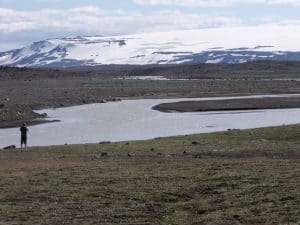 We tackled the warm up rapids allowing ourselves to adjust to the change in speed and volume of the river. As all of the water was now starting to become channeled in to a canyon no more than 25 meters wide in places. We also had to start to deal with surging features, boat swallowing boils and eddylines. We started to use helicular flow of the river to keep us right in the midstream so that we did not get caught up in any unwanted eddylines.
We tackled the warm up rapids allowing ourselves to adjust to the change in speed and volume of the river. As all of the water was now starting to become channeled in to a canyon no more than 25 meters wide in places. We also had to start to deal with surging features, boat swallowing boils and eddylines. We started to use helicular flow of the river to keep us right in the midstream so that we did not get caught up in any unwanted eddylines.
The average summer time level for the East Glacial river is between 50-70 cumecs. Anything over 85 cumecs the river starts to become a real challenging proposition class 5 in places. The river has been kayaked and rafted around the 120 cumec mark a few times. Each trip with its own unique set of stories. Today the river was at the dreamy level of 65 cumecs just enough to keep us on our toes.
The first major rapid on the river, Alarm clock, was tackled with confidence. The river narrows down to a 5m slot with some pretty impressive haystacks and standing waves as you are bottlenecked through the slot.
Once through Alarm clock the river is non-stop for the next 15km. A series of rapids with crashing standing waves leads us to the next big rapid commitment, a class 4, river wide, pour over. with a must make river right line. The kayak team today all must have our synchronized kayaking heads on. As we each perfected the “power backloop and roll” manoeuvre as we crashed through the rapid. I managed to roll up with enough time to see the raft graciously glide down the rapid “bloody rubber bus” I though to myself.
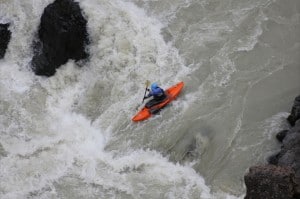
The river kept us on our toes through a series of rapids until we reached Green Room, the biggest rapid on the river, a 3-step class 4+ lottery. A quick chance to get out and stretch the legs before the draw for today’s lottery.
In Green room you have to punch the wave on the first drop right in the sweet spot in order to keep your line for the second drop. The second drop is guarded by a intimidating magnetic midstream rock. Any type of line besides forwards and pointing down stream and you are “GONE” To quote the words of The Chief, the famous Maori raft guide that hails from the Shotover river in Queenstown New Zealand. The third step of Green Room is a mess of churning confused water that has been known to send unsuspecting raft customers underwater for a while.
Sayas myself & Aapo were the first to go so that we could lay down some safety for the raft. As we left the eddy we quickly gave each other the “stay close but give me my space look” All 3 of us coasted through the rapid. We sat in the eddy waiting for the raft to come down. Each of us secretly wishing for some upside down action.
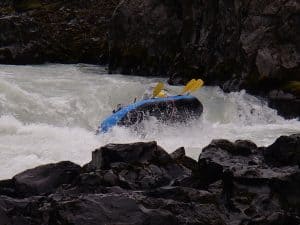
The raft boys looked like they were going to drop the raft sideways into the second drop. I sat up in my kayak ready to punch the air in delight. It was not meant to be, a cheeky sweep stroke from Kalu squared the raft up at the last second they had enough speed to punch the hole and negotiate the 3rd drop no worries.
We tackled the last rapids on the river with ease. The final rapid on the river S bend allowed us a safe passage out of the canyon and back to the outside world again.
It has been said that Tolkien had an Icelandic nanny. The Nanny is said to have taught him Icelandic so that he could read the Icelandic sagas and stories from a young age . Parts of the East Glacial river could be straight out of a chapter from the Lord of the Rings. As I drifted down towards the takeout I kept my eyes open for orcs and princesses to no avail.
We cracked one last beer at the takeout before promptly falling asleep in the bus. We had been very lucky with the fickle Icelandic weather, we had made the correct decisions on the river. We had bonded as a team of guides but most of all we had shared an adventure on a river that will stay with us always.
Our team consisted of – The raft boys: Kalu Gurung and Madhu Pahari of Nepal; Finnur Sgurdsson and Einar Bjosisson of Iceland. The kayakers: Mark Hirst – UK; Aapo hanska Halonen – Finland; Sayas Ghimere – Nepal
